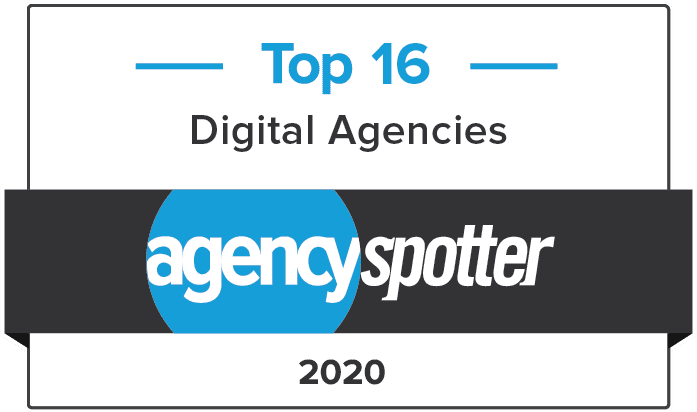
What do changes in media consumption trends mean for marketers?
Throughout the last decade, the media we consume has increasingly moved online. But as COVID-19 caused consumers to stay home in the earlier half of 2020, the digital nature of content and media accelerated at unprecedented rates.
For instance, McKinsey Consulting found that enough purchases from e-commerce transactions were delivered to push the industry forward 10 years in just eight weeks. In five months, Disney+ amassed as many users as Netflix did in seven years.
And just think of the other implications more time at home and online had for media consumption—and the impact it had on advertising. Out-of-home advertising lost its appeal as consumers left home less and less often. Many marketers pivoted dramatically to focus dollars in digital campaigns.
Now, several months into the pandemic and all its challenges, we have a lot of information to look back on, with new insights that can help any brand strategically plan for a better 2021.
A Look Back at 2020 in Media Consumption
While 2020 isn’t over yet, there have been more than enough changes, trends and shifts for marketers to reflect on to gain important insights.
We’ll start with the basics. What do we mean by media consumption from an advertising perspective?
When we talk about media consumption, we’re looking at how and where consumers are interacting with content. Knowing where they get information or find entertainment and what they’re looking for when they get there helps us understand what kind of tactics or campaigns we should use. And it influences the kind of message we’ll serve.
In a recent episode of ASAP: A Strategic America Podcast, our team discussed how the media landscape shifted at the beginning of the pandemic. Sara (Huedepohl) Easton, digital marketing manager at SA, offered insights for paid search, evolving messaging and flexibility.
Search
Toward the beginning of the pandemic, when people were first staying home, many would have expected search to spike. After all, what did we have to do other than shop online? But Sara saw a slightly different trend. Search was still happening, but with users focused on their budgets during an uncertain time, it was more for research than purchase.
Usually when people search for goods or services online, they’re further along in the customer journey. But with eyes now focused on saving money, people moved away from those high-intent searches.
Terms that wouldn’t usually enjoy large search traffic found a spotlight when related to safety and health. At Strategic America, we saw a 150 percent year-over-year increase for search of indoor air quality for our home category clients.
Shifting Messaging
During 2020 so far, messaging shifted for many advertisers. How many creative pieces have you seen that featured a COVID-specific message?
A need to appeal to emotions and show empathy wasn’t the only reason advertisers had to change their messages. In uncertain times, people needed to know what businesses were open and what they were doing to take care of their customers. Messaging moved from promotional to informational.
Flexibility
The need for flexibility in marketing is ever present, but it’s especially heightened this year. With changing regulations and consumer needs in mind, Sara recommends staying flexible with your tools and messaging.
Make sure people know what’s happening with your business—whether your hours are changed, or you’re operating as normal. Stay flexible and update your web presence regularly to ensure content is up-to-date and you maintain credibility with consumers.
Pivot when needed—and remember not everything has to go back the way it was. Some consumers may prefer the new normal. Online interactions have value for consumers and brands alike.
Looking Ahead to 2021
Though many of us are already looking forward to the new year, there’s still time to plan before it officially arrives. And while things have started to become more normal, there are some lasting impacts from this year that can help you plan for next.
Digital Investments Will Continue
Digital acceleration during the pandemic has put us several years ahead of where we thought we would be. According to eMarketer, digital is estimated to make up more than 60 percent of total ad spend by 2024.
Think about what kind of digital investment makes sense for your brand.
New Opportunities are Online
Online activity has exploded—and that won’t all go away in the new year. Short form video platforms, like TikTok, have allowed users to get creative. And provided advertisers a new platform and place to collaborate with influencers.
Virtual events have allowed people from around the world to connect. Multiple platforms have offered younger generations a way to attend—YouTube, Facebook Live, Zoom, Twitch and Instagram Live have all seen their share of audiences.
Global Web Index found 23 percent of consumers plan to continue watching more videos even after the pandemic has ended. Your brand needs great video content to compete.
Traditional Media Remains Valuable
Throughout the pandemic, we’ve also seen the value of more traditional media. Consumers report watching more television and listening to more radio. Outdoor opportunities still exist—people continue to leave their homes for essential errands.
When gauging how to best move forward with your brand strategy, do your research, reflect on past years and plan for flexibility. Consider external factors—like consumer behavior, local regulations and shifting expectations. Your brand is unique, and you must plan in a way that makes sense for you.
Need Help? Work with the Experts.
The only constant in 2020 is change. It can be difficult to navigate it alone. But with the help of an agency partner like Strategic America, it’s easier to handle. Reach out to us today and we’ll help you plan for the road ahead.



